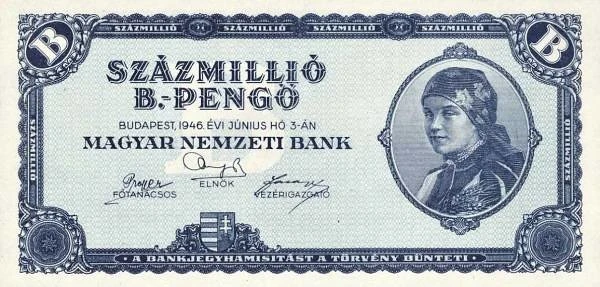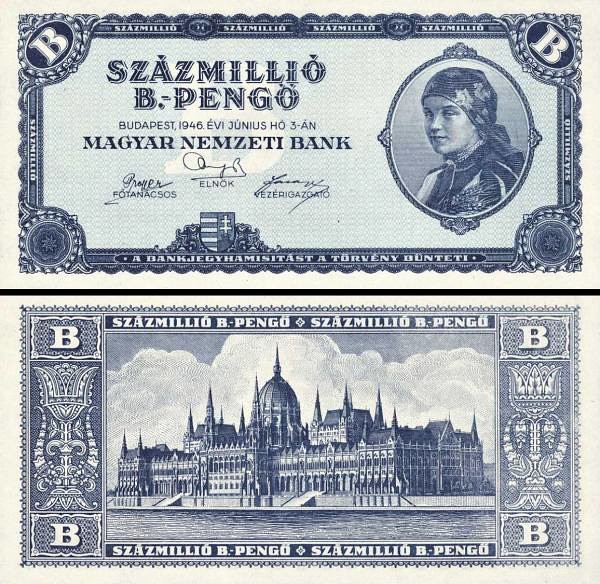100,000,000 billion Hungarian pengő: the world’s highest denomination ever

How much could you buy for one hundred million billion Hungarian pengő? The short answer to the question: How much exactly could you buy for one hundred million billion pengő is USD 279. At least, this is how much you can purchase the banknote of that denomination as listed at press time on eBay. But back in the 1940s, it was a bit more complicated.
You could say that 20th-century Hungary wasn’t constant in its feelings toward money. Initially, after the country appeared from the ashes of the Austro-Hungarian Empire, it used its own korona restamped at par with its former counterpart. Since 1946, it has been using the forint. What was in between was the pengő, 3seaseurope.com wrote.
The life span of the pengő was relatively short: from 1927 to 1946. But boy, did it follow a wild path, starting from modest sums and ending with a denomination at a rate of 1 forint to four hundred octillion pengő. Yes, you read that correctly. That’s a four followed by twenty-nine zeros.
The obligation to change the currency from the former Austro-Hungarian currency was included in the Treaty of Saint-Germain, a peace treaty between the German-Austria Republic and its allied opponents. The economy in Hungary was terrible and soon led the way to massive inflation of the Hungarian korona. But the League of Nations, the United Nations of the time, offered some help.
The highest hyperinflation on record
One of the stabilization mechanisms was the introduction of a new Hungarian currency. The korona became the pengő. The worth of the currency was pegged to gold, for which you could get a kilogram for 3.8 thousand pengő. The currency was very stable for some time, but then the Great Depression kicked in, and World War II only worsened the situation. Fiscal discipline loosened, the war generated costs, and the pengő’s value plummeted.

It was the highest hyperinflation ever recorded: annually 2,900,000,000,000,000,000,000,000,000% (yup, that’s 26 zeros). And the language had to comply. The name of the currency even had to adjust: it turned from pengő to the milpengő (million pengő) and then the b.-pengő (billion pengő). If you were used to paying four hundred pengő for an item in September 1945, nine months later, that same item would cost you a trillion trillion pengő.
Although denominations of the pengő started at 1-pengő coins and 10-pengő banknotes, the highest denomination was a paper banknote worth one hundred million b.-pengő, introduced on 11 July 1946. The central bank was ready to issue a billion b.-pengő banknote, but it never happened. Three weeks later – on 1 August, the forint was introduced, and all Hungarians suddenly ceased to be multibillionaires.
Source: 3seaseurope.com


